Wiccan, Wicca, Wicce, Witch
Over the past few months, I’ve been digging into the 9th to 11th centuries in early English history. This was a tumultuous period to say the least. A time of warfare in which two very different possible futures hung in the balance.
It was also during this time that the word wiccan (“witches”) made its first appearance in the textual sources.
Nowadays, most understand Wiccan to refer to a single practitioner of the neopagan religion Wicca. For the early English though, wiccan was always plural, and a wicca was a male witch. The feminine form of the noun, wicce, eventually became our modern word “witch.”
(Yes, Gerard Gardner chose the singular masculine form of the noun to name his religion. How…utterly unsurprising of him.)
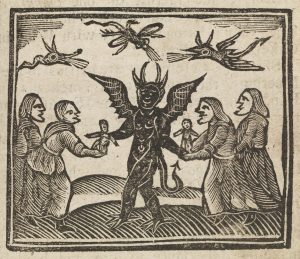
Over the centuries, “witches” have been blamed for all manner of social ills—everything from the ritual murder of infants (a version of the antisemitic blood libel accusation) to blighting crops and causing disease (both of which were also accusations used to wipe out entire communities of European Jews). The meanings of the word “witch” have shifted over time. It’s become something of a malleable term, all too often weaponized. A tool for policing behavior, enforcing dogma, and exerting control.
But that is not the subject of today’s post. That ground is well-trodden enough. No, today I want to talk about the original meaning of the word “witch” and, more importantly, its relationship to early English Heathenism.
The Witch Appears
One of the earliest mentions of the Old English plural form of “witch”, wiccan appears in a passage from the prologue of King Alfred’s Dombōc (law book) (Elsakkers 2010). Now, there is an earlier attestation of the related word wiccungdōm in Cædmon’s Paraphrase that likely dates back to the 7th century (Thorpe. p. 223). However, for this post, I’m going to limit myself to sources including the words wicce, wicca, wiccan and wiccecræft, as well as the verb wiccian.
Anyway, back to Alfred’s Dombōc. The prologue of the Dombōc included sections of chapters 20-22 from the Book of Exodus, ostensibly translated into Old English.
Unsurprisingly, we first find the word wiccan in Alfred’s “translation” of Exodus 22:18 (“Thou shalt not suffer a witch to live.”):
Þa fæmnan þe gewuniað onfon [anfon] gealdorcræftigan [galdorcræft] 7 scinlæcan 7 wiccan, ne læt þu ða libban.
(The women who are wont to receive [and assist] gealdorcræftigan and scinlæcan and wiccan, let them not live.)
(Elsakker 2010)
As you can see from the above quote, Alfred’s treatment of this verse is more reinterpretation than translation. Where the author of the Hebrew Bible punished the mekhashepa, Alfred instead punished the women who welcomed them into their homes and helped them.
But why?
Alfred’s Source
Alfred’s main source was the Vulgate, a 4th century translation of the Hebrew Bible. However, that does not seem to have been his only source. Consider the Vulgate translation of Exodus 22:18 below.
“XXII. 18 maleficos non patieris vivere.”
As you can see, the Vulgate translates the Hebrew word mekhashepa as maleficos, a word that originally meant “evil doers” and carried no connotations with magic in earlier Latin texts. A terrible translation by any measure. But in the defense of the Vulgate’s translator, no other translation was possible. Thanks to the Theodosian Code anything even vaguely related to magic was considered maleficium (“evil doing”) and had been for decades before his birth. For 4th century Romans like Jerome of Stridon (the translator in question), there simply was no difference between charm-muttering healers and sorcerers (Hutton 2017). So, the fact that Alfred used three words where the Vulgate only used one suggests he must have had a secondary source.

– Alfred, never.
The most likely candidate for that secondary source is the Vetus Latina. This is a collection of Latin translations of the Septuagint, a 3rd century Greek translation of Hebraic traditions produced by Jewish scholars who were fluent in both Greek and Hebrew. Unlike the Vulgate that followed it, the Vetus Latina retained the nuance of the Septuagint. And this—more specifically, the Vetus Latina version of Exodus VII.11—is likely the source of Alfred’s own nuance (Elsakkers 2010). Because instead of the evergreen “maleficos” of the Vulgate, the Vetus gives us a trio of practitioners.
However, neither of Alfred’s sources explain the most significant change of the Dombōc version: the target. For that, we’ll have to widen our net.
An Old Norse Parallel?
When I first read Alfred’s law, I was struck by how similar it was to what we find in later Old Norse texts. The peripatetic seeress/magical practitioner that goes from house to house plying her trade is one that crops up in a number of sources, the most famous of which being Þorbjörg Lítilvölva from Eric the Red’s Saga. However fame aside, I think a better parallel to Alfred’s law (at least in sentiment) is verse 22 of the Poetic Edda poem, Völuspá.
”Bright Heiðr they called her
At all the houses she came to,
A good seer of fair fortunes
—she conjured up spirits who told her.
Sorcery (seið) she had skill in,
Sorcery (seið) she practised, possessed.
She was ever the darling
Of an evil wife.”
(Dronke trans.)
In my opinion, Alfred’s choice to condemn the women who received and assisted the practitioners in their homes instead of the practitioners themselves owed more to attitudes prevalent in his own culture than his sources. A culture that shared a common root with and engaged in centuries of interaction and exchange with the Norse.
However, unlike with the Romans, Alfred’s law wasn’t as simple as banning all magic. The presence of magical elements such as verbal charms and ritual acts in early English healing practices would have made such a ban impossible. They may as well have been trying to ban healing itself! An untenable position for any ruler, but especially for one whose rulership was under threat.
And this, friends, is where we come to a key part of this puzzle.
Christians, Danes, and Witches, Oh My!
At the time of the Dombōc’s writing, Christianity was in a perilous position in the English kingdoms. The conversion of the would-be English had begun in 597 CE with the arrival of the monk Augustine in Kent. Over the next two-and-half centuries, Christian missionaries spread their faith throughout the English kingdoms, with the city of Canterbury as their base. However, not all in the kingdoms were eager to receive the new teachings, leading the missionaries (on the pope’s orders) to “sweeten the pot” by co-opting Heathen practices and places of worship instead of simply banning them and tearing them down.
Generally speaking, Christianity spread first among the rulers. However, even after that initial conversion among the kings in the 6th century, some—such as Redwald of East Anglia—were persuaded back to the ways of their ancestors. And even when a king remained devoutly Christian in life, there was no guarantee his heirs would share his devotion. At least two of the kingdoms officially reverted to Heathenism with the ascent of Heathen heirs to their thrones in the 7th century (Knapp. The Fight Against The Threat).
And Christianity seems to have been even more precarious at the popular level. As Karen Jolly notes on page 45 of her book Popular religion in Late-Saxon England:
“The pagan hierarchical structure disintegrated rapidly in the seventh century in the face of Christianity’s systematic organization. But folk practices were all-pervasive in everyday life. The animistic character of Germanic belief prior to Christianization, with its emphasis on nature, holistic cures, and worship at wells, trees, and stones, meant that it was hard to counteract on an institutional level of organized religion. Small religious sites were everywhere; people carried amulets to ward off misfortune and relied on the belief in spiritual agents as explanations for many life experiences.”
That’s not to say that everyone at the popular level was practicing exactly as they had prior to conversion though. Over time, these practices were syncretized with Christian elements (Jolly. 45). Education in Christianity also seems to have been a concern for the church, as few at the popular level were literate—a situation that would remain well into the 11th century.
Then in the late 8th century, the Danes came. This was the world Alfred was born to and the wider context of his law book and education program. A world in which centuries of struggle to fully Christianize a land met a new challenge in the form of Heathen invaders.
Witches, Heathens, and Law
Alfred’s law book wasn’t just the first to mention witches, it was also likely a large part of why “witches” became synonymous with maleficos (and in turn, fordæða in Old Norse). Once included though, witches and witchcraft remained a part of the early English law codes, and persisted in English law long after other terms for practitioners fell away.
(A short note before I proceed: the following laws are pulled from M.J Elsakkers “Reading between the lines: Old Germanic And Early Christian Views On Abortion, which you can find linked at the bottom of the page.)
The first law code to actually sentence the witches themselves was the 10th century law code of Æthelstan, Æt Greatanleage II, which states (ModEng trans. only this time):
“Concerning witchcrafts (wiccecræftum). And we have pronounced concerning witchcrafts (wiccecræftum) and sorceries and secret attempts on life, that, if anyone is killed by such and he (the accused) cannot deny it, he is to forfeit his life”
This is repeated (along with a sentence of outlawry) in the 11th century law Eadward, Alfred and Guþrum:
“If witches (wiccan) or sorcerers (wigleras), perjurers, or murderers or foul, polluted, manifest whores are caught anywhere in the land, they are then to be driven from this country and the nation is to be purified, or they are to be completely destroyed in this country, unless they desist and atone very deeply.”
When we get to article 5.1 of Cnut’s law code from 1020-1021 though, we finally get a possible hint as to the motivation underlying Alfred’s choice to punish the female hosts of magical practitioners instead of the practitioners themselves.
”It is heathen practice if one worships idols, namely if one worships heathen gods and the sun or the moon, fire or flood, wells or stones or any kind of forest trees, or if one practises witchcraft (wiccecræft) or encompasses death by any means, either by sacrifice or divination, or takes any part in such delusions.”
As we can see here, wiccecræft was clearly considered a part of Heathenism in Cnut’s time. If this was also the case in Alfred’s time (more than likely), then it would have made sense for him to find ways to limit contact between the faithful and the Heathen. From this perspective, we might see his amendment to Exodus 22:18 as a way to cut off those contacts by targeting a key vector of transmission: the female hosts.
Ælfric and the Witches
Unfortunately, that is where the legal evidence of wiccan dries up without getting into the Latin translations of those earlier English laws. However, witches also appear in the work of the 11th century homilist, Ælfric of Eynsham. And as infuriating as Ælfric can be to read, he also provides us with some important clues as to how the early English thought about and interacted with witches.
In On Auguries, Ælfric warns his fellow Christians against consulting witches (wiccan) for divination/prophecy, claiming devils as the reason why their predictions prove true. (According to Ælfric, everything a witch could do was down to devils.) In the same text, he also speaks against going to witches for advice about health, a far more holistic concept at the time which not only pertained to physical health but matters of luck, prosperity, and safety. And more curiously, he rails against Christians making offerings at trees and earth-fast stones for healing “as the witches teach.”
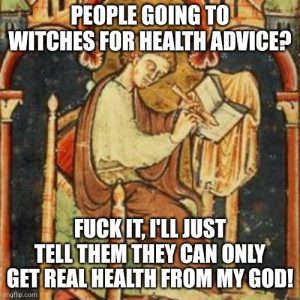
You may have already noticed this, but the roles of the early English wiccan as alluded to by Ælfric, are not so different from what we attributed to the seiðkona, Heiðr, in the Völuspá passage quoted toward the beginning of this essay.
Moreover, I would go so far as to say that those roles sound somewhat cultic. Things a priest/ess might do.
And yes, I know everyone decided this particular line of thought was bullshit decades ago. But if you ask me, we threw out the baby with the Margaret Murray bathwater.
The Witches In The Glosses
Moreover, these possible associations between cultus and wiccan are further strengthened by the Aldhelm glosses. These were Old English translations of Latin words added to a manuscript after its production to aid comprehension. This really isn’t so different from modern readers designed for language learners where you have the target language text and a small glossary of the more difficult words at the bottom of the page.
The relevant glosses are found in the Digby MS 146 manuscript and date back to the 11th century. There we find wiccan glossed with words like p(h)itonissam (or “pythoness,” a term that derived from the oracular priestess of Apollo at Delphi), and ariolum (diviner, seer). We also find wiccan cited as a cognate for helrunan, and wiccecræft used as a gloss for necromantia or “necromancy.” A gloss we find repeated in the 12th century manuscript, MS Royal 6.B.VII.
The Meaning In The Witch
Finally, we come to the etymology of “witch.” As I said at the top of this post, our modern word derives from the feminine form of the OE noun, wicce. Beyond that though, a number of possible etymologies have been proposed. The one I cite below is that found in Gus Kroonen’s Etymological Dictionary of Proto-Germanic:
“*wikkōn- w.v. ‘to practice sorcery’ – OE wiccian w.v. ‘id.’, WFri. wikje w.v. ‘to tell the future, warn’, MDu. wicken w.v. ‘to practice sorcery’, MHG wicken w.v. ‘id.’*uik-néh₂- (WEUR).
Derived from the same root as found in *wiha- 1 and *wiha- 2 (q.v.). The verb served as the derivational base for OE wicca m. ‘witch’, wicce f. ‘id.’ < *wikka/ōn- and MHG wicker m. ‘soothsayer’. Also cf. OE wigol adj. ‘prophet ic’ <*wigala- and OE wĭglian, (M) Du. wichelen ‘to practice divination’.
*wiha- 1 adj. ‘holy’ – Go. weihs adj. ‘id.’, OHG wih adj. ‘id.’*uéik-o- (WEUR) – Lat. victima f. ‘sacrificial animal’ < *uik-tm-ehz-. Also cf. Go. weihan w.v. ‘to bless, consecrate’ < *wihen- and ON vígja, OFri. wi(g)a, OS wihian, Du. wijden, OHG wihen, G weihen w.v. ‘id.’ < *wih/gjan-. Related to *wiha-2 and *wikkōn- (q.v.).
*wiha- 2 m./n. ‘sanctuary’ – ON vé n. ‘mansion; sanctuary’, OE weoh, wig m. ‘idol’, OS wih m. ‘temple’ (WEUR). Closely related to *wiha- 1 ‘holy’ (q.v.).”
How interesting that once again we find ourselves back in the realm of cultus!
Final Words
This post has been long and something of a winding road. However, the picture that emerges is surprisingly coherent, spanning a variety of textual sources, and has strong parallels with themes found in later Old Norse material.
I’ve actually been wanting to write this for a while for a couple of reasons. The first is that I’ve found myself getting increasingly frustrated by the perennial discourse surrounding the matter of what a witch is and who gets to call themself a witch. So, I hope this provides some helpful context for these discussions going forward – or at least encourages more precision with regards to the era of witchcraft being discussed. Secondly, I wanted to highlight the connection between those original wiccan and Heathen cultus, and to begin drawing attention to the parallels in ON accounts of seiðr. For a multitude of reasons (many shitty), the label “witch” has been somewhat stigmatized in modern Heathen communities, something to be avoided, and primarily associated with modern Wicca. I would like for that particular discourse to also shift.
As for whose cultus I think the wiccan might have belonged to? My personal guess would be that of Ing, the early English Freyr, but I’ll have to save my reasoning for that for another post.
For now though, let’s just concentrate on getting that proverbial baby back into the bathtub. Murray’s work may be riddled with issues, but even a stopped clock is right twice a day, and I think there is enough here to conclude she was right that the witch’s roots lie in pre-Christian belief, likely in the realm of cultus.
With that said, be well all!
Oh, and before I forget, I’m giving another class on Sunday. This time I’ll be looking at the matter of luck, what it is, its implications for magic, and how to work with it. Interested? You can find tickets (along with more info) here. All ticket holders receive recordings after the class. This time, the attendee pack is also coming with a little book as well.
Sources
Bouterwek, K. “Die Angelsächsischen Glossen in dem Brüsseler Codex von Aldhelms Schrift De Virginitate.” Digizeitschriften. n.d. https://www.digizeitschriften.de/id/345204107_0009%7Clog30?tify=%7B%22view%22%3A%22info%22%7D
“Caedmon’s Metrical Paraphrase of Parts of the Holy Scriptures in Anglo-Saxon : Caedmon, Benjamin Thorpe : Free Download, Borrow, and Streaming : Internet Archive.” Internet Archive. Accessed September 19, 2024. https://archive.org/details/caedmonsmetrica01thorgoog/page/n265/mode/2up?q=magic
Dronke, Ursula. The Poetic Edda: Volume III Mythological Poems II. 1969.
Elsakkers, M. J. “Reading between the lines: Old Germanic and early Christian views on abortion.” Research Explorer. Accessed September 19, 2024. https://pure.uva.nl/ws/files/1578616/76079_article_08_embargo_twee_jaar.pdf
Hutton, Ronald. The Witch: A History of Fear, from Ancient Times to the Present. New Haven: Yale University Press, 2017.
Jolly, Karen L. Popular Religion in Late Saxon England: Elf Charms in Context. Chapel Hill: UNC Press Books, 2015.
Knapp, R. I. “The Fight Against the Threat of Witchcraft and Paganism in Anglo-Saxon England.” Lux et Fides: A Journal for Undergraduate Christian Scholars 1 (May 2023). https://pillars.taylor.edu/cgi/viewcontent.cgi?article=1001&context=luxetfidesjournal
Kroonen, Guus. Etymological Dictionary of Proto-Germanic. Brill Academic Publishers, 2013.
“Old English Glosses : Chiefly Unpublished : Napier, Arthur S. (Arthur Sampson), 1853-1916 : Free Download, Borrow, and Streaming : Internet Archive.” Internet Archive. Accessed September 19, 2024. https://archive.org/details/oldenglishglosse00napiuoft/page/n1/mode/2up
Pollington, Stephen. Leechcraft: Early English Charms, Plant Lore, and Healing. 2000.
“Pythoness – No, Not a Big Female Snake.” Notre Dame Sites. Last modified October 20, 2017. https://sites.nd.edu/manuscript-studies/2017/10/20/pythoness-no-not-a-big-female-snake
Simpson, D. P. Cassell’s New Compact Latin-English, English-Latin Dictionary. 1971.
Thorpe, Benjamin. The Anglo-Saxon Poems of Beowulf, the Scôp Or Gleeman’s Tale, and the Fight at Finnesburg. With a Literal Translation, Notes, Glossary Etc. by Benjamin Thorpe. 1855.
https://archive.org/details/anglosaxonpoemso00thor/page/12/mode/2up
“Thou Shalt Not Suffer A Witch to Live, A Murderous Mistranslation.” Haaretz | Israel News, the Middle East and the Jewish World – Haaretz.com. Last modified August 17, 2017. https://www.haaretz.com/archaeology/2017-08-17/ty-article/thou-shalt-not-suffer-a-witch-to-live-a-murderous-mistranslation/0000017f-e2c8-d804-ad7f-f3fa49340000)
Vulgate Latin Bible With English Translation. Accessed September 19, 2024. https://vulgate.org/
“Ælfric’s Lives of Saints/17aug – Wikisource, the Free Online Library.” Wikisource, the Free Library. Accessed September 19, 2024. https://en.wikisource.org/wiki/%C3%86lfric%27s_Lives_of_Saints/17aug



 living. But their visits also brought sickness, and that’s just what they brought to the people of a place called Frodis-water.
living. But their visits also brought sickness, and that’s just what they brought to the people of a place called Frodis-water. some of those laws might be. I am going to infer one right now: that our rights to this world are lost when we breathe our last.
some of those laws might be. I am going to infer one right now: that our rights to this world are lost when we breathe our last.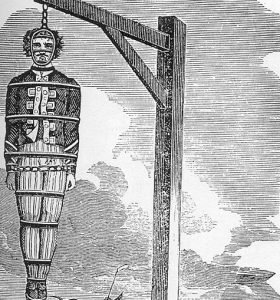 The story of the door-courts suggests that both living and dead are equally bound by the law. We also see this reflected in the burial customs of those deemed to exist outside the protection of the law. These were often the criminals left to rot at the crossroads, those buried in unhallowed grounds, and those who were too young at the time of their passing to be formally accepted in a community (Petreman “Preturnatural Usage”). Is it any coincidence that the materia magica sought from the human body came most often from these sources? Is it also coincidence that those were the sources thought by the Ancient Greeks to carry the least miasma (Retief “Burial”)? To exist as dead inside the protection of the law is to sleep soundly – or at least it should mean that. Of course, there have always been violations as Burke and Hare could well attest.
The story of the door-courts suggests that both living and dead are equally bound by the law. We also see this reflected in the burial customs of those deemed to exist outside the protection of the law. These were often the criminals left to rot at the crossroads, those buried in unhallowed grounds, and those who were too young at the time of their passing to be formally accepted in a community (Petreman “Preturnatural Usage”). Is it any coincidence that the materia magica sought from the human body came most often from these sources? Is it also coincidence that those were the sources thought by the Ancient Greeks to carry the least miasma (Retief “Burial”)? To exist as dead inside the protection of the law is to sleep soundly – or at least it should mean that. Of course, there have always been violations as Burke and Hare could well attest.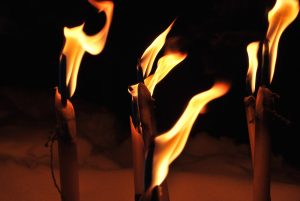 the holy powers, but fire also played an important role in property ownership too. For the Norse, carrying fire sunwise around land you wished to own was one method of claiming that land (LeCouteux 89), and under Vedic law new territory was legally incorporated through the construction of a hearth. This was a temporary form of possession too, with that possession being entirely dependent on the ability or willingness of the residents to maintain the hearthfire. For example, evidence from the Romanian Celts suggests that the voluntary abandonment of a place was also accompanied by the deliberate deconstruction of the hearth. And the Roman state conflated the fidelity of the Vestal Virgins to their fire tending duties with the ability of the Roman state to maintain its sovereignty. The concept of hearth as center of the home and sign of property ownership continued into later Welsh laws too; a squatter only gained property rights in a place when a fire had burned on his hearth and smoke come from the chimney (Serith 2007, 71).
the holy powers, but fire also played an important role in property ownership too. For the Norse, carrying fire sunwise around land you wished to own was one method of claiming that land (LeCouteux 89), and under Vedic law new territory was legally incorporated through the construction of a hearth. This was a temporary form of possession too, with that possession being entirely dependent on the ability or willingness of the residents to maintain the hearthfire. For example, evidence from the Romanian Celts suggests that the voluntary abandonment of a place was also accompanied by the deliberate deconstruction of the hearth. And the Roman state conflated the fidelity of the Vestal Virgins to their fire tending duties with the ability of the Roman state to maintain its sovereignty. The concept of hearth as center of the home and sign of property ownership continued into later Welsh laws too; a squatter only gained property rights in a place when a fire had burned on his hearth and smoke come from the chimney (Serith 2007, 71).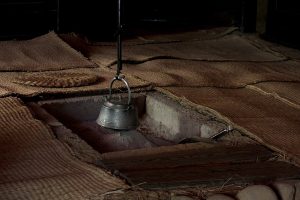 fires burning. To maintain the hearth was to maintain possession of property, and to maintain the hearth, a woman was required. (Or several, if you happen to be the Roman state.)
fires burning. To maintain the hearth was to maintain possession of property, and to maintain the hearth, a woman was required. (Or several, if you happen to be the Roman state.)


